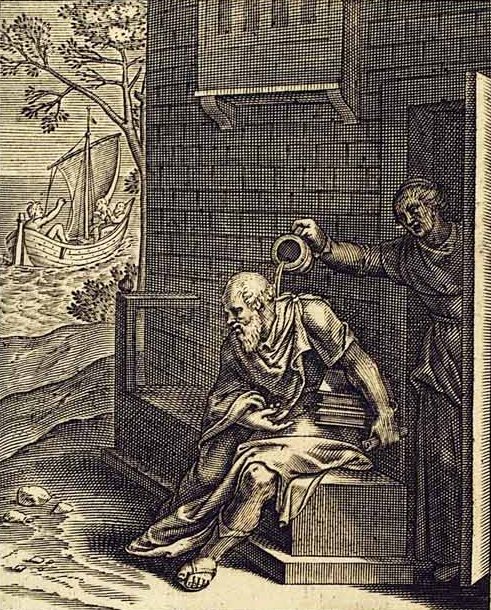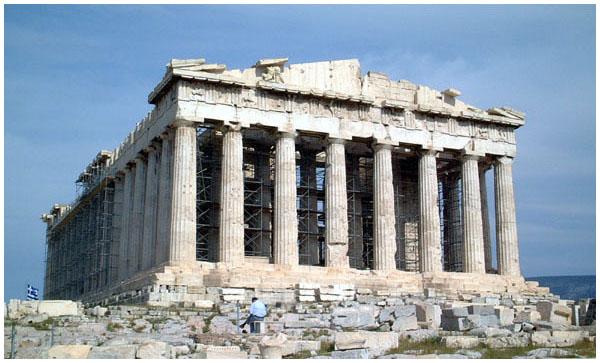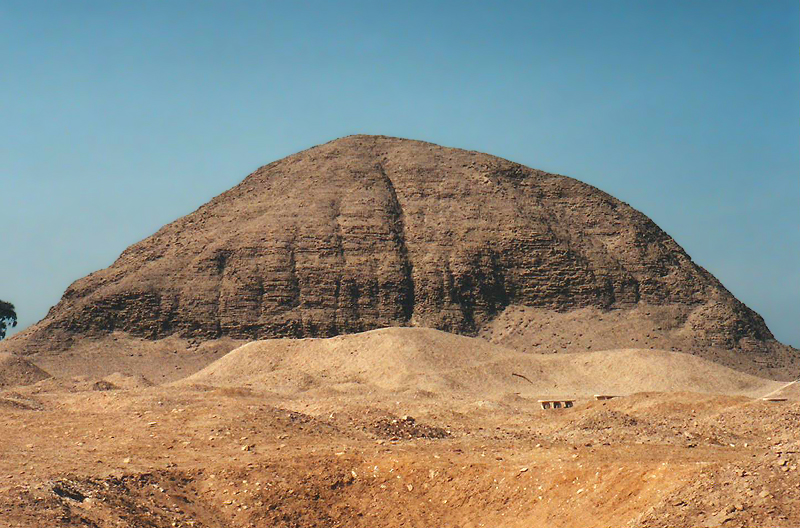Epicurus believed that the universe is infinite and eternal. He said that everything in the universe is made up of indestructible atoms, making matter. They float all around, bumping and swerving. Humans themselves are nothing more than just physical interactions among these particles. “Living things are made up of particles, and it should be possible to explain the mind and its senses through the interactions between these particles. Everything happens according to the laws of nature, and not because of the divine will of any gods.” (source) (Craig 223, source)
There is a God and humans are much more than just atoms bumping into one another. We have purpose and meaning.
Epicurus once said, “Death, the most dreaded of evils, is therefore of no concern to us; for while we exist, death is not present, and when death is present, we no longer exist.” (Morris 203)
Epicurus is right that death should not be a concern to us. If one accepts Jesus, one should not be worried about death. However, when he says it isn’t a concern, look at the world. Lots of people are worried about death, and were even in his time (341-271 B.C.) He is right that death is not present when we exist. However, he is wrong when he says that when we are dead we no longer exist. There is an afterlife and we will still exist after our death on Earth. Therefore, death is of concern to us because after we die, we have no choice whether we will go to heaven or to hell anymore. Death is also not the most dreaded of evils because after we die, we can go to heaven. If one doesn’t go to heaven afterwards, that is not because of death. It is because one didn’t accept Jesus sooner.
“We usually think of charity, compassion, humility, wisdom, honor, justice, and other virtues as morally good and pleasure as, at best, morally neutral, but for Epicurus, behavior in pursuit of pleasure assured an upright life.” (source) “He taught that the point of all one's actions was to attain pleasure (conceived of as tranquility) for oneself, and that this could be done by limiting one's desires and by banishing the fear of the gods and of death. Epicurus' gospel of freedom from fear proved to be quite popular, and communities of Epicureans flourished for centuries after his death.” (source) “All that is needed for happiness is a life among friends, a body free from pain, and a peaceful mind. Living honestly brings the greatest peace of mind, and a correct understanding of nature can help free a person from needless fears and anxieties. He said that happiness can be gained by pursuing pleasure and avoiding pain. But always consider the consequences of pursuing pleasure, because some forms of pleasure result in a pain which is many times greater than any pleasure to be gained. And all things are best enjoyed in moderation. He said that it was wrong to think that just because life had no meaning that people would have no price to pay for the things they did. People are called to account throughout their lives by the judgments of others, or by the fear of being found out.” (source)
Is there nothing to life but trying to find pleasure? Is that the meaning of life? Epicurus has already established that humans themselves have no meaning because we are nothing but colliding atoms. What’s the point of living if the goal is just to try to find pleasure? How do you know when you’ve found it? Is there a standard, or should we all just have our own concept of pleasure? How far should we limit our desires? If we can never find pleasure, are we worthless? But wait, we are worthless even if we find pleasure. There are many problems with this thinking and too many unanswered questions.
“In the centuries following the death of Epicurus, some of his followers began to preach self-indulgence. They believed that we should abandon our restraints and live for the moment. The word ‘Epicurean’ came to describe someone who lived only for pleasure.” (source) That is extremely selfish! Even Epicurus said that finding pleasure included having friends. If we are true friends, we care about our comrades. A real friend doesn’t only care about themselves, but cares about the other person as well. That’s part of a solid friendship!
For those that may be lost, here's a quick summary:
· Epicurus said that everyone should seek to gain knowledge and become a slave to philosophy.
· Epicurus believed that the universe is infinite and eternal.
· He taught that living beings are just colliding atoms and that humans have no true meaning.
· He said that death should be of no concern to us because life is all there is anyway, so we should just have fun with life while we have it.
· He believed that life is about finding pleasure. Pleasure is found by limiting our desires, having peace of mind, having friends, and AVOIDING PAIN. This is a key part in his philosophy, but something impossible for humans to accomplish.
· Epicurus’ followers are called Epicureans.
Works Cited
Craig, Edward. The Shorter Routledge Encyclopedia of Philosophy. New York: Routledge. 2005.
Morris, Tom. Philosophy for Dummies. Foster City, CA: IDG Books Worldwide, Inc. 1999.
























 Left: part of the Iliad on papyrus
Left: part of the Iliad on papyrus Right: part of the Odyssey on papyrus
Right: part of the Odyssey on papyrus












